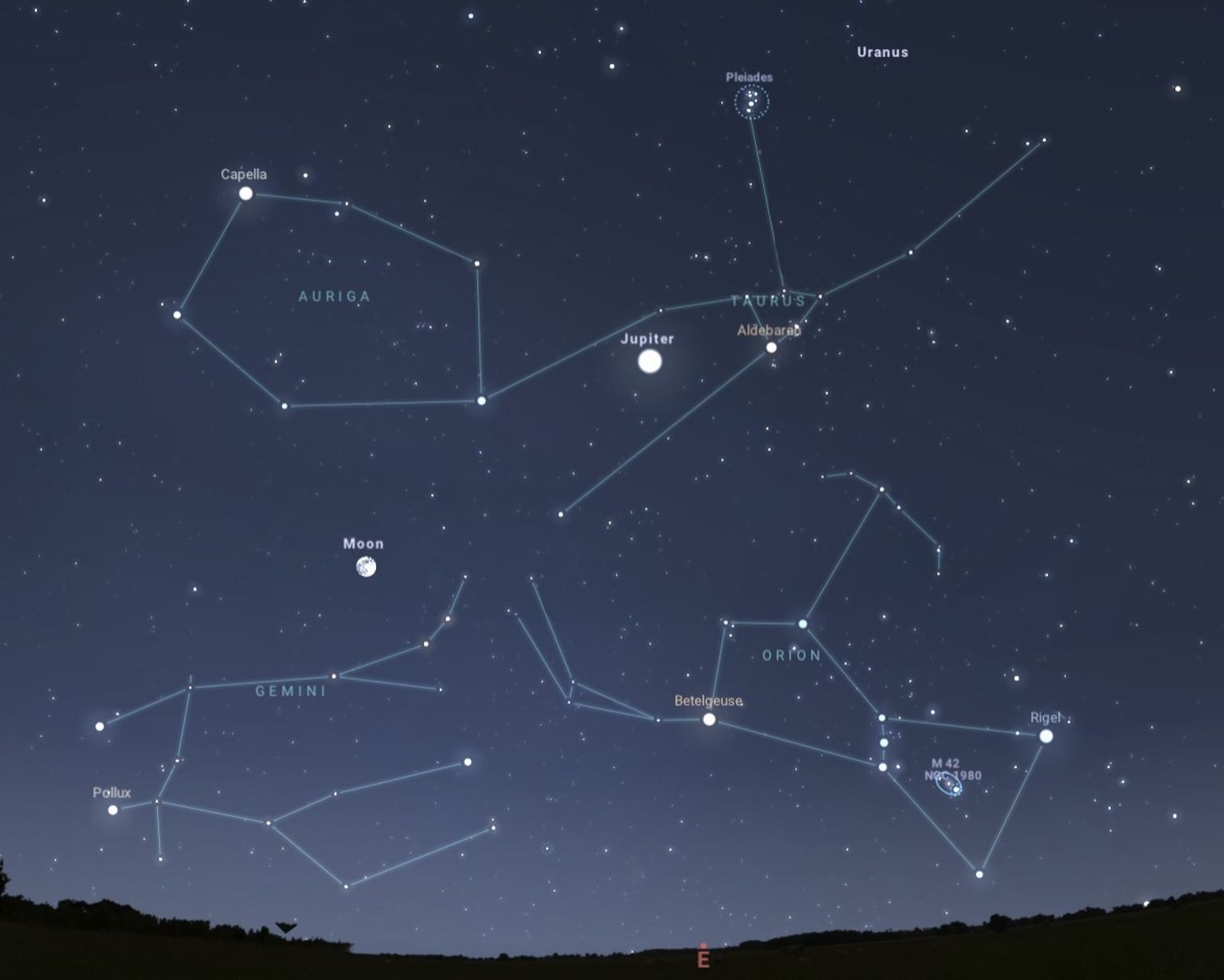
December offers stargazers an excellent opportunity to observe Jupiter, the largest planet in our solar system and one of the brightest objects in the night sky. Often visible with the naked eye, Jupiter is an awe-inspiring sight, easily recognized by its banded cloud tops and its numerous moons, including the four large moons first observed by Galileo over 400 years ago.

NASA, JPL-Caltech, SwRI, MSSS | Image processing by Kevin M. Gill, © CC BY
According to Kat Troche of the Astronomical Society of the Pacific, Jupiter’s size is nothing short of remarkable. With a diameter over 11 times that of Earth, you could fit more than 1,300 Earths inside it. Despite its massive size, it’s the planet’s enormous mass that defines its dominance in the outer solar system. Jupiter’s gravity is powerful enough to influence the orbits of countless comets and asteroids, and its gravitational pull can even redirect these objects toward the inner solar system. A dramatic example of this was the 1994 collision of Comet Shoemaker-Levy 9, when fragments of the comet struck Jupiter’s atmosphere with such force that the impacts were visible from Earth.
Jupiter remains bright even when it’s far from Earth. At its closest, it’s still over 365 million miles away, but even at its furthest point, 600 million miles from Earth, the gas giant continues to shine brightly. Though Jupiter has 95 known moons, the four largest — Io, Europa, Ganymede, and Callisto — are the easiest to spot with a modest telescope or binoculars. These moons, known as the Galilean moons, appear as small star-like objects near Jupiter, and their movements are an excellent observation project for amateur astronomers.

Credit: Stellarium Web
The planet’s famous Great Red Spot and its cloud bands are visible through most telescopes, and larger telescopes can reveal even more details, such as the shadows of the Galilean moons as they pass in front of the Sun.
NASA’s Juno mission, launched in 2016, has been instrumental in expanding our understanding of Jupiter. Orbiting the planet, Juno has provided crucial data about its interior and its large moons. The mission has since been extended, with the probe making close flybys of Jupiter’s icy moons — Ganymede, Europa, and volcanic Io. The upcoming Europa Clipper mission, set to launch in 2024, promises to unlock even more secrets about Jupiter’s moons, with a focus on Europa’s potential to support life.
For those interested in a hands-on astronomy project, the Astronomical Society of the Pacific offers an activity guide to sketch the positions of Jupiter’s moons throughout the night. Observing and documenting the movements of these moons is a rewarding experience for anyone looking to connect with the wonders of our solar system.


